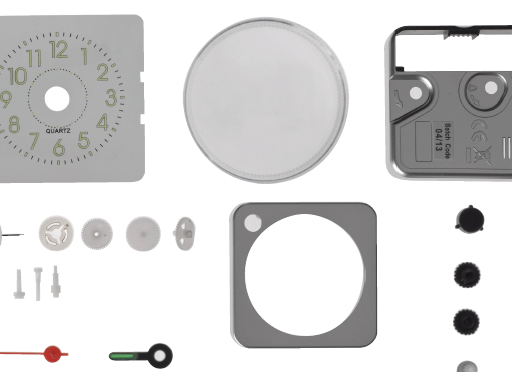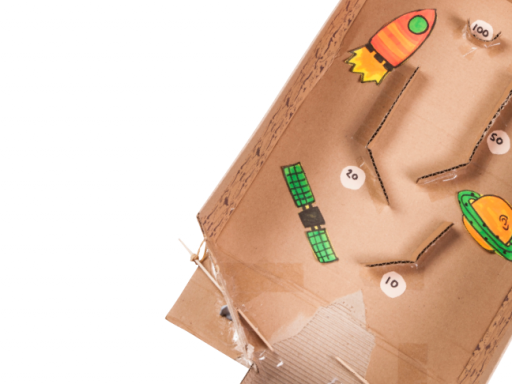Love music, but disappointed with the puny sound you get from smartphone speakers? In this activity, things found around the home will boost the sound those speakers make. It’ll also make you think about how sounds are made and how they can be made louder.
Printable downloads
Follow these steps…
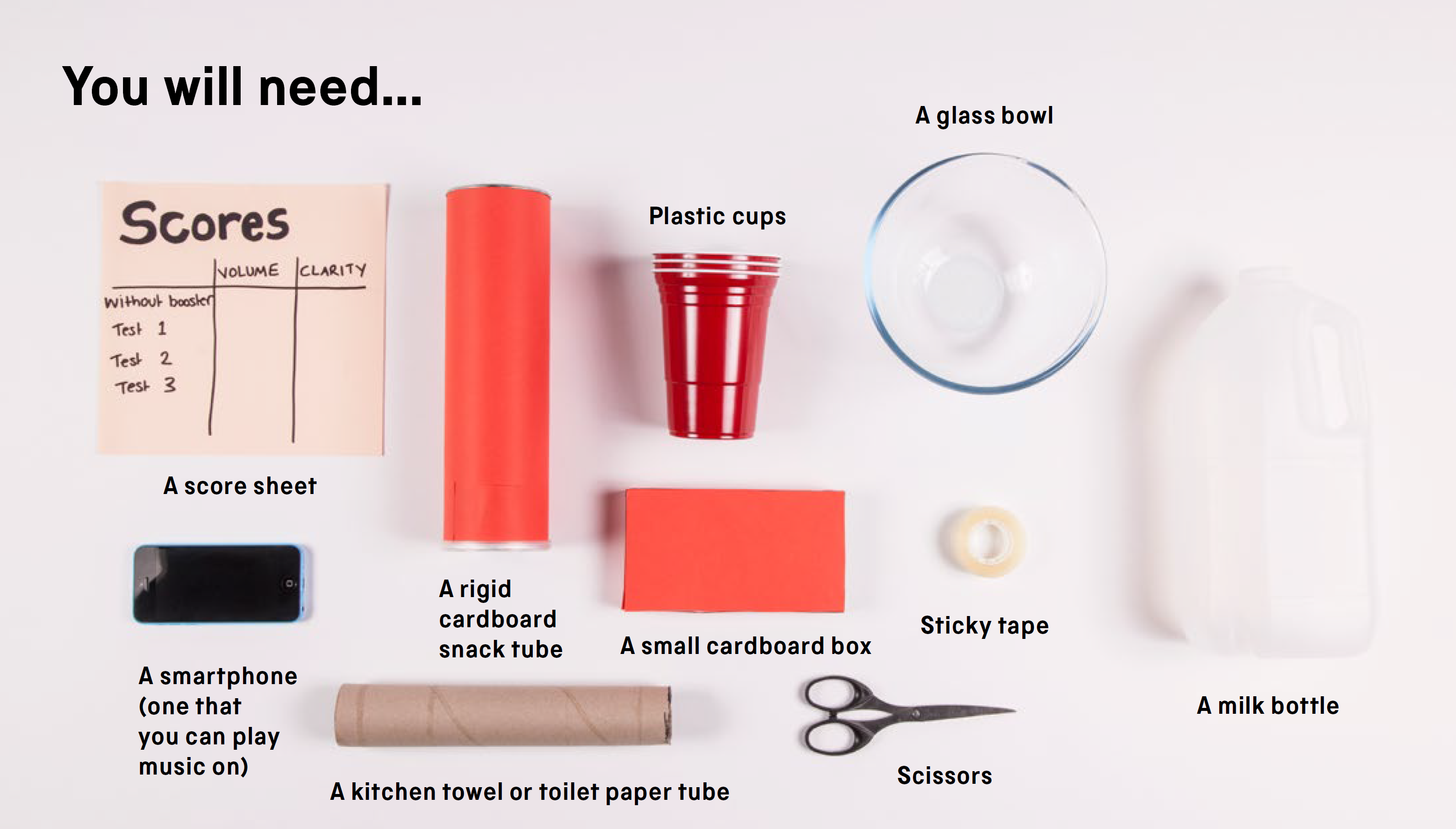
Top tip
If you have another phone, install a sound level meter app (free ones are available) and use it to measure how loud the sound is. If you can’t do that, then listen to the sound and compare it with the sound of the phone on its own.
-
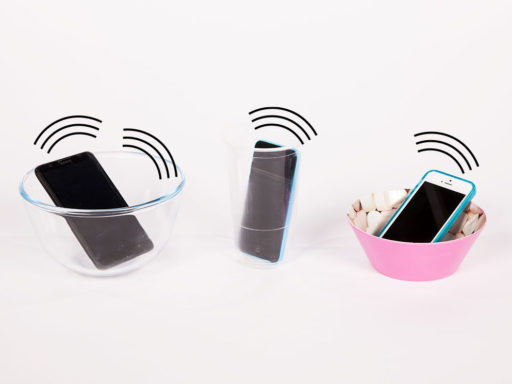 Start playing a song on your phone. Listen and note down how loud it sounds. Put your phone into the different cups and bowls and listen how the sound changes.
Start playing a song on your phone. Listen and note down how loud it sounds. Put your phone into the different cups and bowls and listen how the sound changes. -
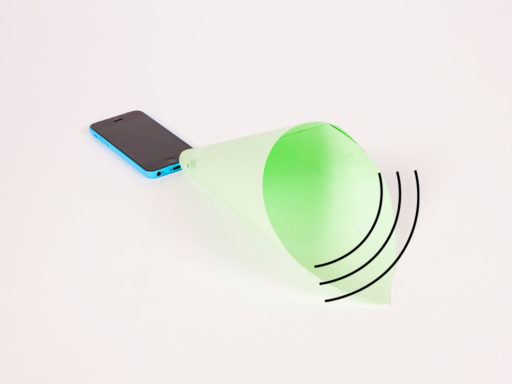 Try making a horn out of paper and attach it over the speaker of your phone. Does this boost the sound?
Try making a horn out of paper and attach it over the speaker of your phone. Does this boost the sound? -
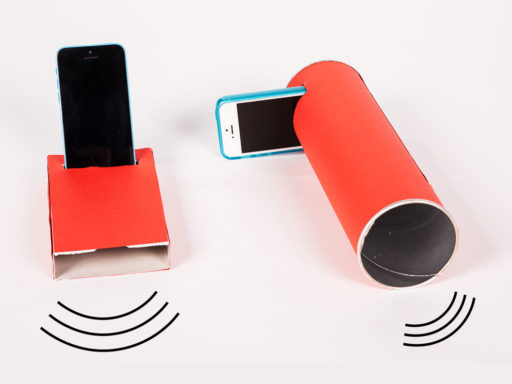 If you have a card box or tube, cut a hole for your phone to fit inside it. Does it make a good tune booster?
If you have a card box or tube, cut a hole for your phone to fit inside it. Does it make a good tune booster? -
 Try combining different objects and materials to make something a bit more complex.
Try combining different objects and materials to make something a bit more complex.
Think and talk about…
- Which items make the best sound boosters? Why is that? And which ones don’t work as well?
- Why do you think the sound is different when you use the boosters?
- Where have you noticed sound being amplified or muffled in your own life?
Investigate…
- Experiment with different shapes and materials.
- What happens if you create a booster made of two materials (eg paper and glass)?
- Can you design a muffler for the sound – something that will dampen the sound instead of amplifying it?
Did you know?
One of the loudest sounds ever heard on Earth was the 1883 eruption of the volcanic island Krakatoa, in Indonesia: it deafened anyone within 30 kilometres.
What’s the science?
Sound is produced by anything that vibrates. The vibrations disturb the air around them, making the air vibrate too. The vibrations spread out in all directions as waves, and you hear the sound when they hit your eardrums. The different boosters in the activity make the sound louder in two main ways. If the phone is in contact with the booster, then the booster vibrates too – and that disturbs more air, making more sound. Some boosters work by preventing the sound waves from spreading out, channeling them in just one direction instead.
Science in your world
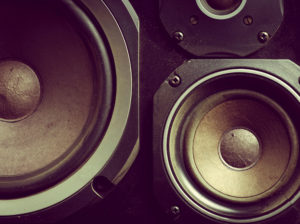 Loudspeakers are normally much bigger than the ones in your smartphone – so they disturb much more air. The vibrations are more energetic too, because they are driven by a powerful amplifier. The cabinet the speaker is housed in also vibrates, making more sound – and a hole at the front means that most of the sound travels out that way, so less sound is lost behind the speaker.
Loudspeakers are normally much bigger than the ones in your smartphone – so they disturb much more air. The vibrations are more energetic too, because they are driven by a powerful amplifier. The cabinet the speaker is housed in also vibrates, making more sound – and a hole at the front means that most of the sound travels out that way, so less sound is lost behind the speaker.

